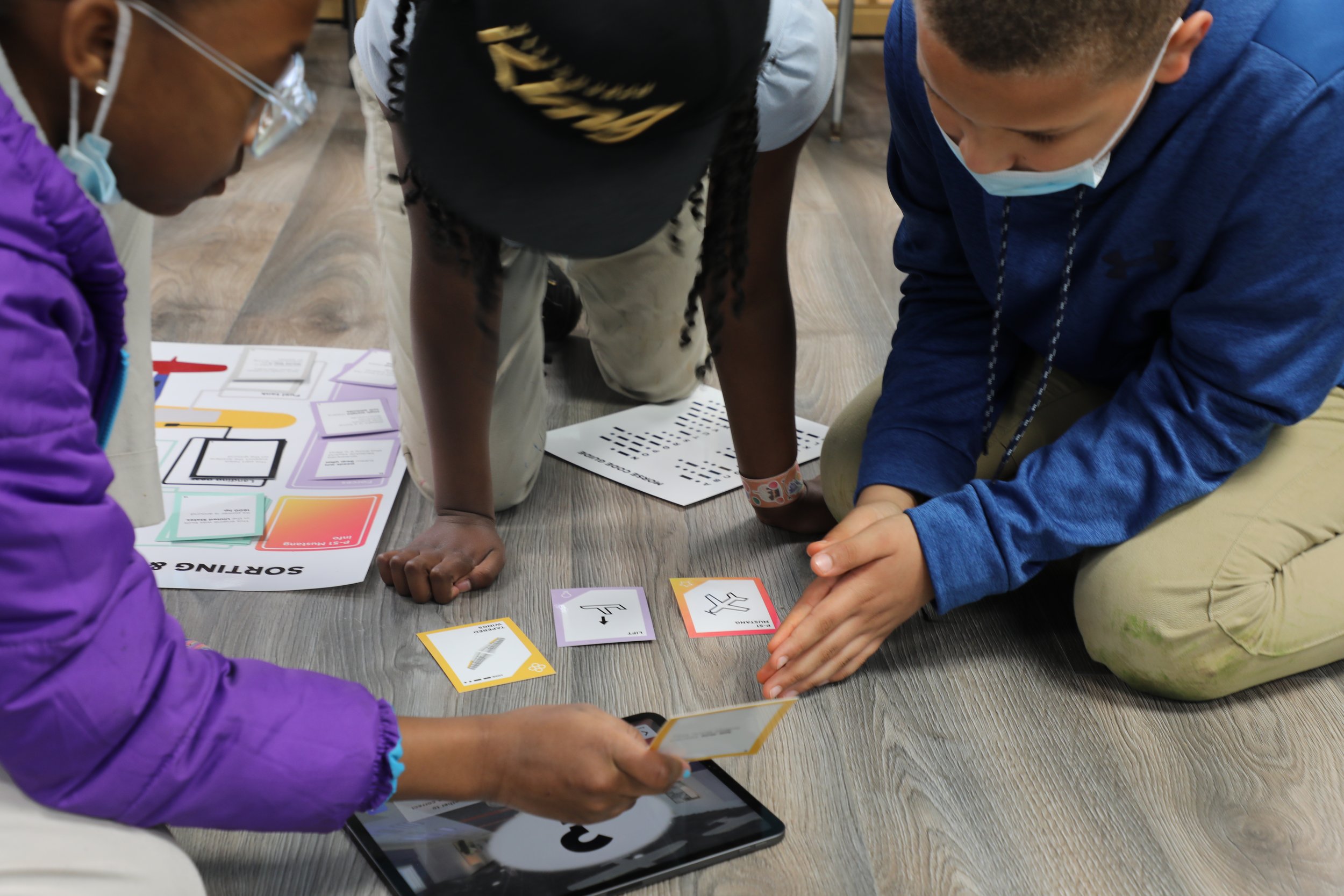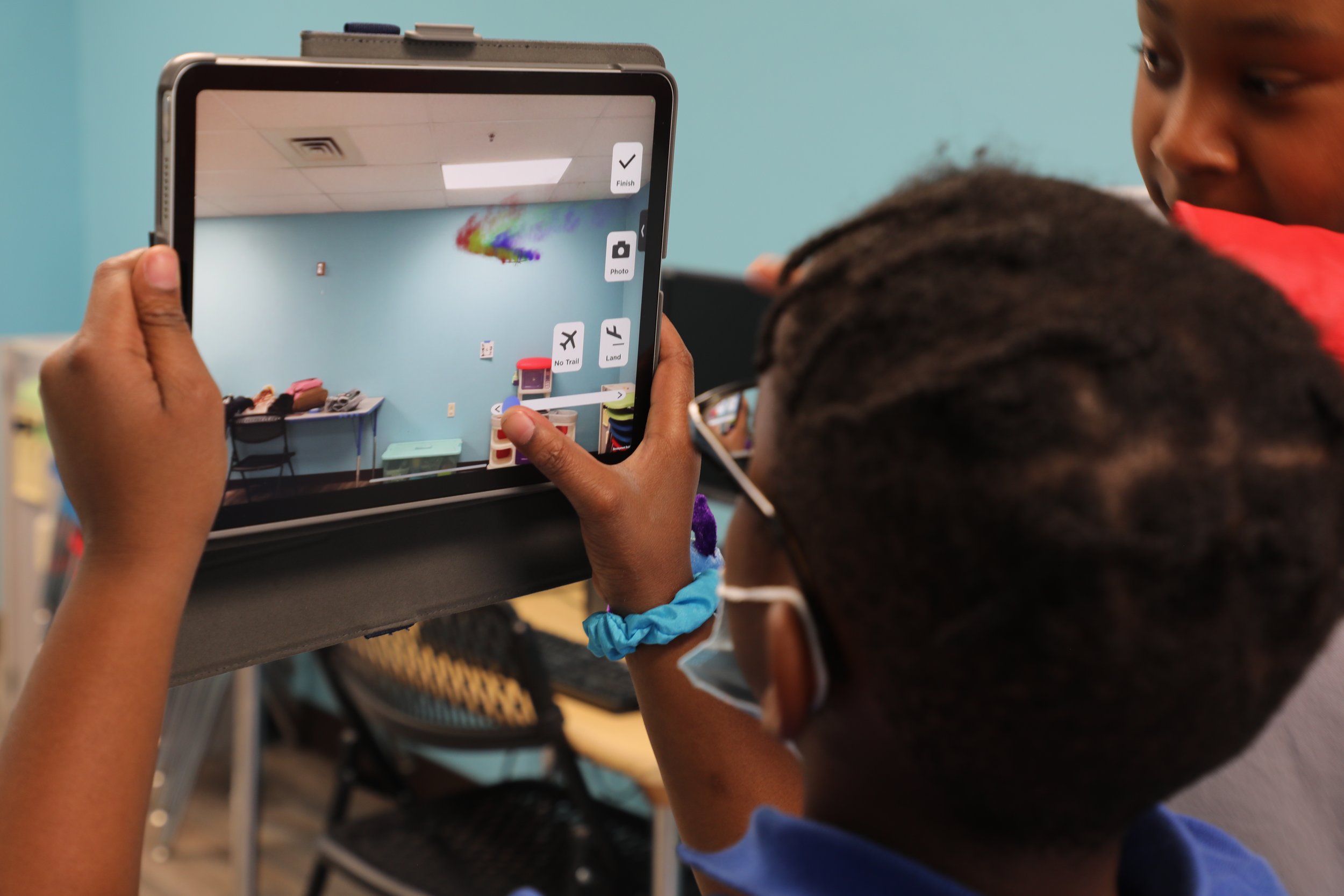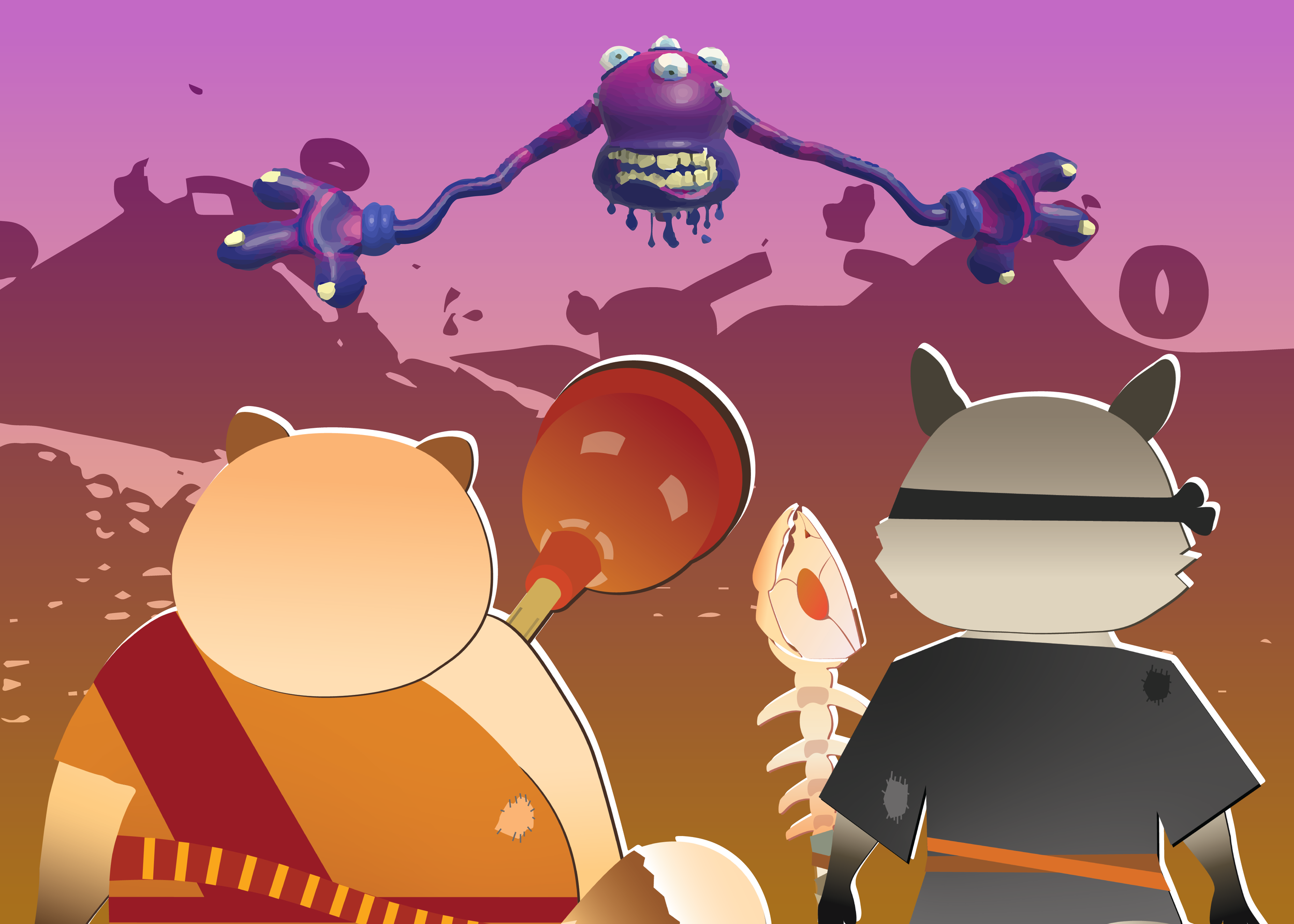
BAM! Build A Mustang
BAM! Build A Mustang is an AR experience in the Center for Aviation Technology and Training in Pittsburgh. It complements the Tuskegee Airmen exhibit and immerses school children in the world of aviation.
Collaborators
UI Designer Ivy Liu
Programmer Jimmy Chen, Eric Zhu
Co-producer, UX Designer María L. Mirabelli
Project Website: https://projects.etc.cmu.edu/ar-viation/
My role
Co-producer, Game Designer
Game Design, Production, Modeling, Texture
Platform
iOS
Tools
Maya, Unity AR Foundation, Substance Painter
Timeline
14 weeks
“The best location-based game ever from the school.”
-Jesse Schell. Author of The Art of Game Design
Project Trailer
Project Goal
To create an augmented reality experience to spark children’s interest in careers in aviation.
Clients
Our client is the MuseumLab, from the Children’s Museum of Pittsburgh. Their goal is to have our experience complement their own work, a museum exhibit on the Tuskegee Airmen for the Center for Aviation Technology and Training run by Hosanna House.
Hosanna House is a center in Pittsburgh, with the intention “to produce a generation of children prepared for the successful transition into grade school and beyond.” They aim to “end a life cycle of poverty and help individuals and families reach their maximum potential.”
Location
Center for Aviation Technology and Training
Demographics
3rd to 5th-grade students (predominantly African American)
Exhibit Space
Narrative
When the students first open the app, they are introduced to the fictional narrator Charlie. Charlie is an African American teen who inherited a P-51 Mustang from her great-grandfather. He was a Tuskegee Airman during World War II. Although Charlie recently got her license to fly the P-51 Mustang, the plane is in need of restoration. Charlie challenges the students to help her find the missing parts in the exhibit space. Charlie also addresses the students as a “team of experts”, showing her trust in the students’ ability to accomplish this task.
Since aviation is a complex topic for this age group, we designed this narrative/narrator to help guide the students through the experience, providing explanations and hints.
Experience Walkthrough
Materials
After walking through the exhibit, the students are divided into groups of 3 to 5. Each group is be given an iPad, a deck of cards, a morse code guide, and a large poster. The experience starts with a card game guided by the app.
iPad Air with open app
Deck of cards with box
Letter-sized, laminated
Large poster, laminated
Card Sorting
To start the game, Charlie tells the students to place the cards on the guide based on their colors.
After sorting the cards, the students will notice that there are two types of cards: information cards and component cards. Information cards include the simple physics of the airplane, as well as specific facts about the P-51 Mustang. They are clues for the puzzles. There are 7 components in total, and some of them have multiple choices. There are 2 wings, 2 fuel tanks, 3 engines, and 3 propellers. The teams need to find the correct component for P-51 Mustang based on the information cards.
Component Selection
For each puzzle, Charlie will provide the cards needed. Let’s take the wing as an example. The teams need the P-51 Mustang card, the two wing cards, and the Lift card.
To find the correct wing, the teams need to pay close attention to the information on the back of the cards. The P-51 Mustang card says that this plane flies at high altitude, and the lift card tells that high lift creates high altitude. Therefore, the correct answer is wings that can provide high lift, which is the tapered wings.
After finding out the correct answer, the teams can tap on the screen to go to the next puzzle. If they choose the wrong answer, the narrator will explain why it is wrong.
Component “Hunting"
After the teams solve all the puzzles, the game will go into the hunting stage. In the hunting stage, we placed the AR markers around the exhibit space and designed a decipher game for the teams. Each card comes with a piece of morse code. Using the morse code guide, the teams can find the correct letter. We use the morse code for an educational purpose to remind children of its communication usage in the war.
After deciphering the code, the teams have to find where the marker hides. The 3D airplane component will show up after scanning the marker. We make the texture of the airplane realistic and authentic to show the details.
Assembly
Once all missing components are collected, the game goes into the assembly stage. In this stage, teams are asked to build the airplane using the components they found. With simple tapping gestures, the students can place the component to an outlined spot on the airplane to see if it fits. We also implemented functions like switching perspective and rotating the airplane for the team to use throughout the experience. After finishing the assembly, there will be fireworks to celebrate the team’s success.
Flying
The last part of the experience is flying the airplane in the exhibit space. After scanning the runway, teams can control the airplane to take off and land, go up, down, left, and right, as well as add a rainbow trail. The rainbow trail is implemented for fantasy and fun. Teams can also take pictures with the AR camera to record memorable moments and share them with family and friends.
Playtesting Photos
Experience Overview
Design Challenges
Limited iPads for an AR Experience
We’ve had a few design challenges in the process. The first one is the limited number of iPads. We knew from the beginning that 3 to 5 students have to share one iPad. To reduce the possibility of the students fighting over one iPads, we decided to direct the attention to the physical materials. Making the experience outside the iPad equally important.
Type of Gameplay for Pre-teens
The first type of gameplay we prototyped is an asymmetric game with roles. Each student gets one role, historian, engineer, or physicist. They are given unique manuals with detailed information in their area of specialty. After reading the manuals, they would collaborate together to solve the puzzles. However, we soon realized that this type of gameplay is not the best for this age group. It brings too much pressure on the individual students. If one student has difficulty reading the manual on their own, this design makes him/her feel bad. So we later abandoned this gameplay and used shared information gameplay instead.
The Appropriate Difficulty Level
Another big challenge we had was to figure out the appropriate difficulty level of the educational content for our age group. Plane physics is very complex and it was challenging to reduce it to a level that can be disgusted for this age group. When we first playtested using the manuals, the information was too dense for the students to understand. The amount of texts makes them feel like doing schoolwork and reduced their willingness to participate. We switched to colorful cards, divided the content on one page into multiple cards, and reduced the texts to the bare minimum. We also paid attention to the vocabulary we use. For example, using parts instead of components, and storage instead of inventory. After iterating through 9 versions of manuals and cards, we were able to balance challenge and fun.
AR Marker Design
The last big design challenge we had was the design of the AR markers. We used AR Foundation to identify the markers during the hunting stage. The design of the markers is very important for the AR to work. At first, we had 4 models show up at the same time because the iPad had difficulty distinguishing between the 4 markers. We went through many design iterations to make sure the AR experience is smooth and without error.
Reflection
Reflecting on the process and the end product, there are a few things we would change or add if there’s more time.
In terms of the design schedule, we could have playtested with our focus group earlier. We playtested with adults a few times before we playtested with kids. Those playtesting were not as helpful since the behaviors, educational levels, and interests of the playtesters were dramatically different. If we had playtested with kids earlier, we would have switched from manuals to cards much earlier, leaving more time to refine.
In the flying stage, the airplane sometimes gets too small if the student keeps flying it in one direction. We would add programming logic to avoid this if having more time.










































